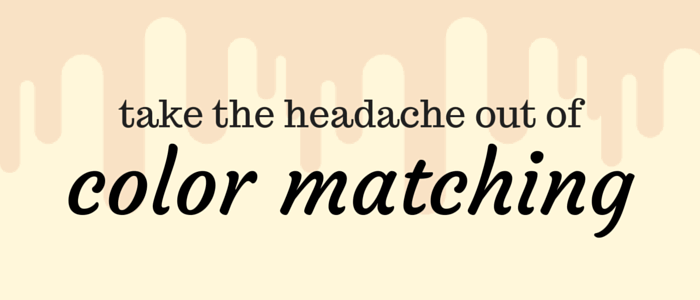

Revolutionizing the screen printing industry through cutting-edge technology and quality service
Anatol Equipment Manufacturing Co.
1429 S Shields Dr
Waukegan, IL 60085


Revolutionizing the screen printing industry through cutting-edge technology and quality service
Anatol Equipment Manufacturing Co.
1429 S Shields Dr
Waukegan, IL 60085

Have you ever had to pass on a print job because your customer needed garments printed in a color you couldn’t provide? It’s not as uncommon as you might think. Luckily, there are tools to help you meet almost any color demand.
If you find yourself struggling to match your client’s desired color, you have two options. You can gamble with your customer’s order by mixing inks using your knowledge of color blending and your eyes until you get a good approximation of their choice (possibly wasting ink in the process), or you can simply refer to the Pantone Matching System.
If you’ve been around the screen printing industry for awhile, you’ve probably heard of Pantone Inc. Pantone is instrumental in the regulation and standardization of universal colors. Their color guides are referenced by companies and individuals around the world, from designers to screen printers.
The Pantone Matching System (PMS) is the international language for accurate color matching. The system is organized by catalogs of all different shades of colors, each assigned a respective identification number. The Pantone Matching System is the most popular reference guide for color. It gives you, the printer, and your customer the ability to discuss specific colors for projects according to their reference numbers. The system is a simple way to assure uniform color throughout a project, like matching the color of a business logo with a letterhead.

Any color might look different when printed on two different materials, so the guides are separated into coated, uncoated and matte to give the user as much accuracy as possible. In screen printing, many printers refer to the coated color guide because it’s glossy like plastisol prints.
Several screen printing ink manufacturers offer ink mixing systems, which are essentially collections of assorted inks that can be mixed to replicate the colors found in the PMS Color Guide. Ink mixing systems are a bigger investment than regular screen printing ink, but the technology behind the system can be a real benefit to your shop. The systems are linked to a computer program that lets you enter the PMS color you want to create and it provides the mixing formula you need. The process of creating a customer-matched color with an ink mixing system is cheaper than purchasing a specific color for a single production run, plus you can charge a specialization fee, increasing your profit from that job.
If you decide to use an ink mixing system, you need a Pantone swatch guide. Avoid using online swatch guides – no two monitors are alike and the color you view on your computer screen may not look the same as it does on your client’s monitor. The best way to replicate a color is to view it in its most accurate form: a swatch guide by Pantone. Even these printed guides can vary as they fade over time, so be sure to replace them regularly.
It’s also important to have an accurate scale to measure how much ink you’re adding to create your Pantone color. The formula for a Pantone color can be fairly particular, so adding too little or too much of a certain color may yield the wrong results.
Even with the most accurate color matching tools available, it’s important to inform your clients that a perfect match might not always be possible. So many factors affect the final color of a print, from the substrate to the curing time and temperature, that you should take time to explain to your customers how much variation they can realistically expect in their prints.
If you use helpful color matching tools and clearly communicate your capabilities and standards to your customers, your screen printing shop should be able to handle even the most exacting jobs.
Need an ink mixer for your shop? Anatol’s Formulator can get the job done. Contact us today and stop mixing ink by hand!
Your message was successfully sent!